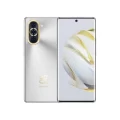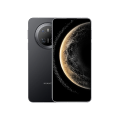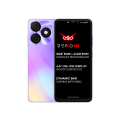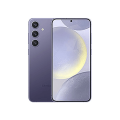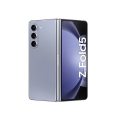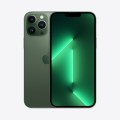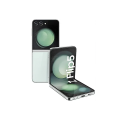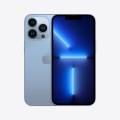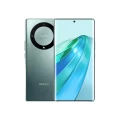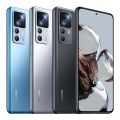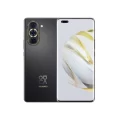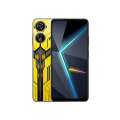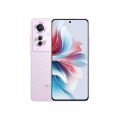- Homepage | Database
- All Products
- Mobiles & Tablets
- Huawei nova Y71
Huawei nova Y71
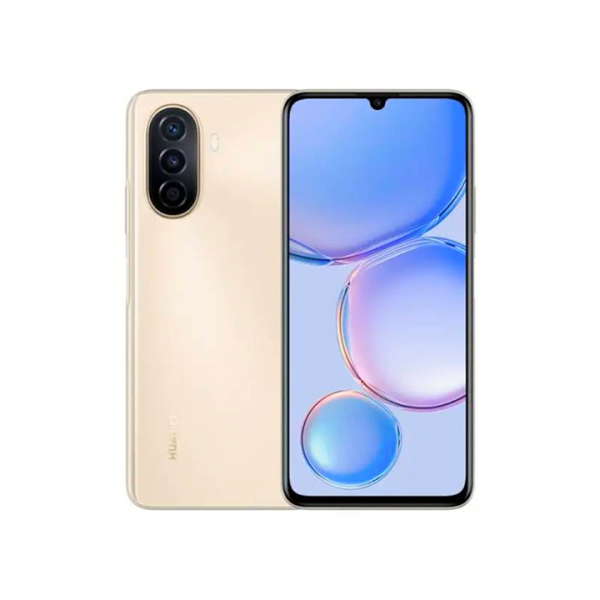


Display and Build
The Huawei Y71 sports a 6.0-inch IPS LCD display, presenting visuals in a resolution of 720 x 1440 pixels, coupled with an 18:9 aspect ratio. This translates to a pixel density of 268 ppi, ensuring decent clarity and sharpness. The Corning Gorilla Glass 3 fortifies the display against minor scratches and accidental drops.
Performance and Storage
Under the hood, the device is powered by the Qualcomm MSM8917 Snapdragon 425 chipset, built on the 28 nm process. This chipset incorporates a quad-core 1.4 GHz Cortex-A53 CPU, offering adequate performance for day-to-day tasks. Handling graphical elements is the Adreno 308 GPU. Depending on user requirements, one can opt for variants with either 2GB or 3GB of RAM. Storage options include 16GB or 32GB eMMC 5.1, ensuring decent read/write speeds. For those needing extra storage, the phone provides a microSDXC slot dedicated solely for storage expansion.
Camera System
The Huawei Y71 offers a single 13 MP camera at the rear, equipped with an f/2.2 aperture and PDAF for quick focus. It comes with features like LED flash, HDR, and panorama. Video recording capabilities extend up to 1080p at 30fps. On the front, selfies and video calls are facilitated by a 5 MP camera with an f/2.2 aperture, which also supports 1080p video recording.
Connectivity and Features
The Huawei Y71 provides support for GSM, HSPA, and LTE networks. For those who juggle between work and personal contacts, the phone houses a Dual SIM setup. Local connectivity is managed through Bluetooth 4.2 and WiFi 802.11 b/g/n. Navigation is made possible via GPS, and for charging or data transfer, the device employs a microUSB 2.0 port with USB On-The-Go support. In terms of sensors, the phone is equipped with an accelerometer, proximity sensor, and a compass.
Software and Battery
On the software front, the Huawei Y71 runs on Android 8.1 (Oreo), customized with Huawei’s proprietary EMUI 8.0 skin, offering a blend of Android’s core features and Huawei’s unique additions. Keeping the lights on is a Li-Ion 3000 mAh battery, ensuring decent endurance for moderate use.
Design, Price, and Availability
The Huawei Y71 offers three elegant color options: Black, Gold, and Blue. The 3GB + 32GB variant is attractively priced at PHP 6,990, offering a good balance between features and cost for budget-conscious users.
Articles
HUAWEI nova Y91 and Y71 now available in the Philippines
The HUAWEI nova Y91 and nova Y71 represent the newest generation of the …
Huawei nova Y91 announced
Huawei has just announced their new mid-range smartphone device: the Hua…
Specs
Smartphone Full Specification
| Display Display Technology => A number of display technologies and types used in mobile phones => TFT (Thin Film Transistor), IPS (In-Place Switching), OLED (Organic Light Emitting Diode), AMOLED (Active-Matrix Organic Light-Emitting Diode), Super AMOLED (an even advanced version of AMOLED), Resistive Touchscreen (Resistive touchscreens contain two layer of conductive material with a very small gap between them which acts as a resistance), Capacitive Touchsceen (Capacitive touchscreen technology consists of a layer of glass coated with a transparent conductor) |
6.0 inches IPS LCD, 720 x 1440 pixels, 18:9 ratio, 268 ppi density Corning Gorilla Glass 3 |
| CPU CPU (Central Processing Unit) mostly known as processors, CPU processes instructions in order to carry out certain functions that make your device operate properly. Processors are often described as the brain of computers, smartphones and tablets, Smartphones and tablets rely on processors to carry out their every task, Processors are an incredibly important factor in selecting any type of computing device, including your smartphone. | Qualcomm MSM8917 Snapdragon 425 (28 nm) chipset, quad-core 1.4 GHz Cortex-A53 CPU, |
| GPU GPU (Graphics Processing Unit) is a single-chip processor designed to rapidly manipulate and alter memory to accelerate the creation of images in a frame buffer intended for output to a display, This includes things such as lighting effects, object transformations, and 3D motion. | Adreno 308 GPU |
| RAM (Memory) RAM (Random Access Memory) is a type of computer memory that can be accessed randomly, any byte of memory can be accessed without touching the preceding bytes that allows information to be stored and accessed quickly from random locations. RAM is the most common type of memory found in computer systems, smartphones, tablets and other electronic devices. | 2GB or 3GB RAM |
| Internal Storage Internal Storage is a data storage space (flash memory) mostly used in smartphones, tablets and other electronic devices where operating system, apps, music, photos, videos, files and other user data Is stored. | 16GB or 32GB eMMC 5.1microSDXC (dedicated slot) |
| Camera Camera is able to capture photographs and usually videos, The most important characteristics of a camera are the resolution (measured in megapixels), lens focus type (fixed or automatic), higher megapixel cameras are known to capture higher quality photos, but not always a good measurement of the photos quality. |
Single camera setup - 13 MP, f/2.2, PDAF; LED flash, HDR, panorama; video recording up to 1080p@30fps Single camera setup - 5 MP, f/2.2; video recording up to 1080p@30fps |
| SIM Slot | GSM / HSPA / LTE |
| Connectivity | Dual SIM (Nano-SIM, dual stand-by) |
| Wi-fi Wi-Fi is a popular wireless networking technology using radio waves to provide high-speed network connections that allows devices to communicate without cords or cables, Wi-Fi is increasingly becoming the preferred mode of internet connectivity all over the world. | Bluetooth 4.2 |
| Bluetooth Bluetooth is a wireless communications technology for exchanging data between mobile phones, headsets, computers and other network devices over short distances without wires, Bluetooth technology was primarily designed to support simple wireless networking of personal consumer devices. | WiFi 802.11 b/g/n |
| GPS GPS The Global Positioning System is a satellite-based radio navigation system, GPS permits users to determine their position, velocity and the time 24 hours a day, in all weather, anywhere in the world, In order to locate your position, your device or GPS receiver must have a clear view of the sky. | GPS |
| Ports | microUSB 2.0, USB On-The-Go |
| NFC NFC (Near field communication) is a set of standards for smartphones and similar devices to establish peer-to-peer radio communications with each other by touching them together or bringing them into proximity, usually no more than a few inches. | |
| Infrared Infrared connectivity is an old wireless technology used to connect two electronic devices. It uses a beam of infrared light to transmit information and so requires direct line of sight and operates only at close range. | |
| Features | Accelerometer, proximity, compass |
| Operating System OS => Every computer system run on a base software called Operating System (OS). Operating System controls all basic operations of the computer (such as smartphone, PDAs, tablet computers and other handheld devices). The Operating System allows the user to install and run third party applications (apps), apps are used to add new functionality to the device. | Android 8.1 (Oreo), EMUI 8.0 |
| Battery Battery Capacity is a measure (typically in Amp-hr) of the charge stored by the battery, and is determined by the mass of active material contained in the battery. The battery capacity represents the maximum amount of energy that can be extracted from the battery under certain conditions. | Li-Ion 3000 mAh, non-removable |
| Colors | Black, Gold, Blue |
| Price | PHP 6,990 for the 3GB + 32GB |
| Released | July 2023 |
Reviews
Disclaimer Note
Disclaimer: We cannot ensure that all the information provided on this page is entirely accurate.


